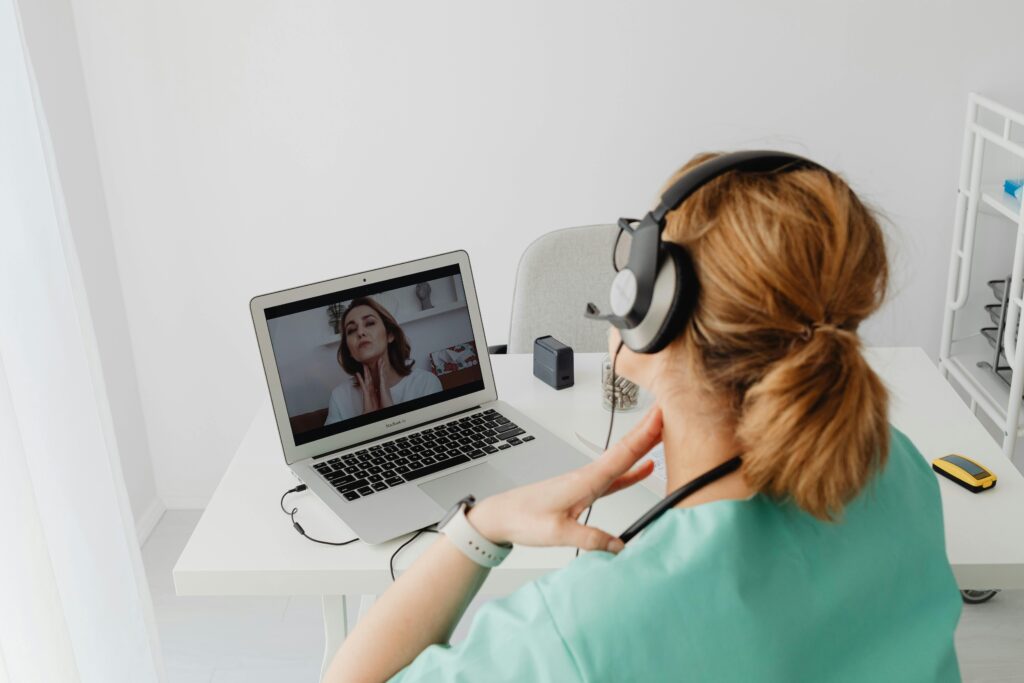Telepsychiatry is a branch of telemedicine that enables patients to access psychiatric care remotely through secure, encrypted digital platforms. It provides greater accessibility to mental health services, especially for individuals in remote areas or those with mobility limitations. Let’s explore what to expect during a telepsychiatry appointment, highlighting key benefits and addressing common concerns.
Key Benefits of Telepsychiatry
One of the primary benefits of telepsychiatry is enhanced accessibility. Patients in rural or underserved areas can connect with psychiatric professionals without the need for long-distance travel, overcoming geographical barriers to care. This is particularly valuable for individuals with limited mental health resources.
Another significant advantage is the convenience it provides. Telepsychiatry appointments can typically be scheduled flexibly, allowing patients to integrate sessions into their daily routines with minimal disruption. Accessing care from the comfort of one’s home can reduce the stigma some individuals may feel about seeking mental health treatment.
Telepsychiatry also enables continuity of care when in-person visits are not feasible, such as during pandemics or personal emergencies. This continuity can be key for maintaining treatment plans and achieving consistent outcomes. Technological advancements have made telepsychiatry secure and reliable, fostering trust between patients and providers by guaranteeing privacy and confidentiality.
Common Concerns About Telepsychiatry
While telepsychiatry offers numerous benefits, particular concerns and misconceptions are common:
- Security and Privacy: Many patients worry about data breaches. Telepsychiatry platforms use encryption and comply with HIPAA to protect sensitive information.
- Effectiveness: Some question whether virtual sessions are as effective as in-person therapy. Studies indicate that telepsychiatry delivers comparable outcomes in many mental health treatments.
- Technology Use: Concerns about technical difficulties are valid, but most platforms are user-friendly and include support to resolve potential issues.
- Scope of Treatment: A misconception exists that telepsychiatry is limited in its diagnostic and treatment capabilities. It effectively addresses a wide range of conditions, such as anxiety, depression, PTSD, and ADHD.
- Therapeutic Connection: Patients may initially feel that online sessions lack personal connection. Over time, many adapt and find telepsychiatry equally engaging and effective.
What to Expect During an Appointment
A telepsychiatry appointment follows a straightforward process designed for ease and practicality:
- Pre-session Preparation: Most providers utilize medical software that allows patients to complete necessary paperwork before the session. This can be done from the comfort of their home.
- Secure Access: Telepsychiatry relies on encrypted platforms that enable privacy and ease of use. These platforms are optimized for accessibility, minimizing challenges for patients unfamiliar with technology.
- Consultation: Once logged in, the patient meets with the psychiatrist at the scheduled time. The session mirrors an in-person conversation, with the psychiatrist conducting evaluations, discussing symptoms, and tailoring treatment based on the patient’s needs.
Common Features of Telepsychiatry Platforms
Telepsychiatry platforms are designed with features that prioritize both functionality and user experience. One key feature is security, as these platforms rely on encrypted systems to enable privacy and protect sensitive patient information. This creates a secure environment for both patients and psychiatrists to communicate.
Accessibility is another key component. Platforms are optimized to be user-friendly, reducing difficulties for patients who may be unfamiliar with technology. This enables a wider range of individuals to engage with mental health services without unnecessary obstacles.
The consultation process is structured to resemble traditional in-person sessions. After logging in at the scheduled time, the patient interacts with the psychiatrist via video or audio. During the session, the psychiatrist conducts evaluations, discusses symptoms, and tailors treatment plans to meet the individual needs of the patient. This approach makes sure that the dynamics of care remain consistent with conventional methods while leveraging the convenience of digital technology.
Get Started with Telepsychiatry Today
Telepsychiatry is a key advancement in making mental health care more accessible, convenient, and secure. Patients can now receive expert support without the logistical challenges of traditional therapy appointments. To get started, consult with a licensed telepsychiatrist for more information.

